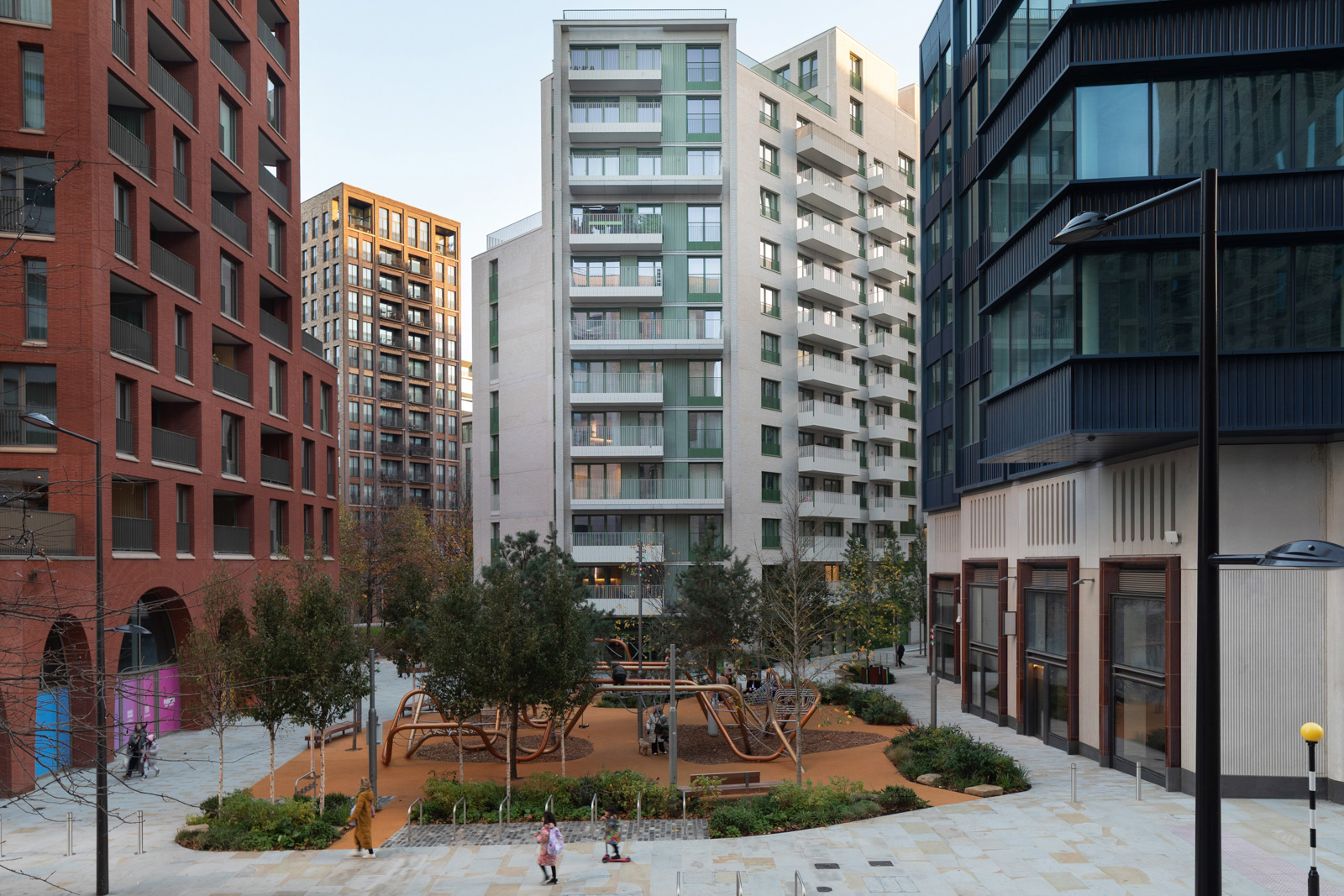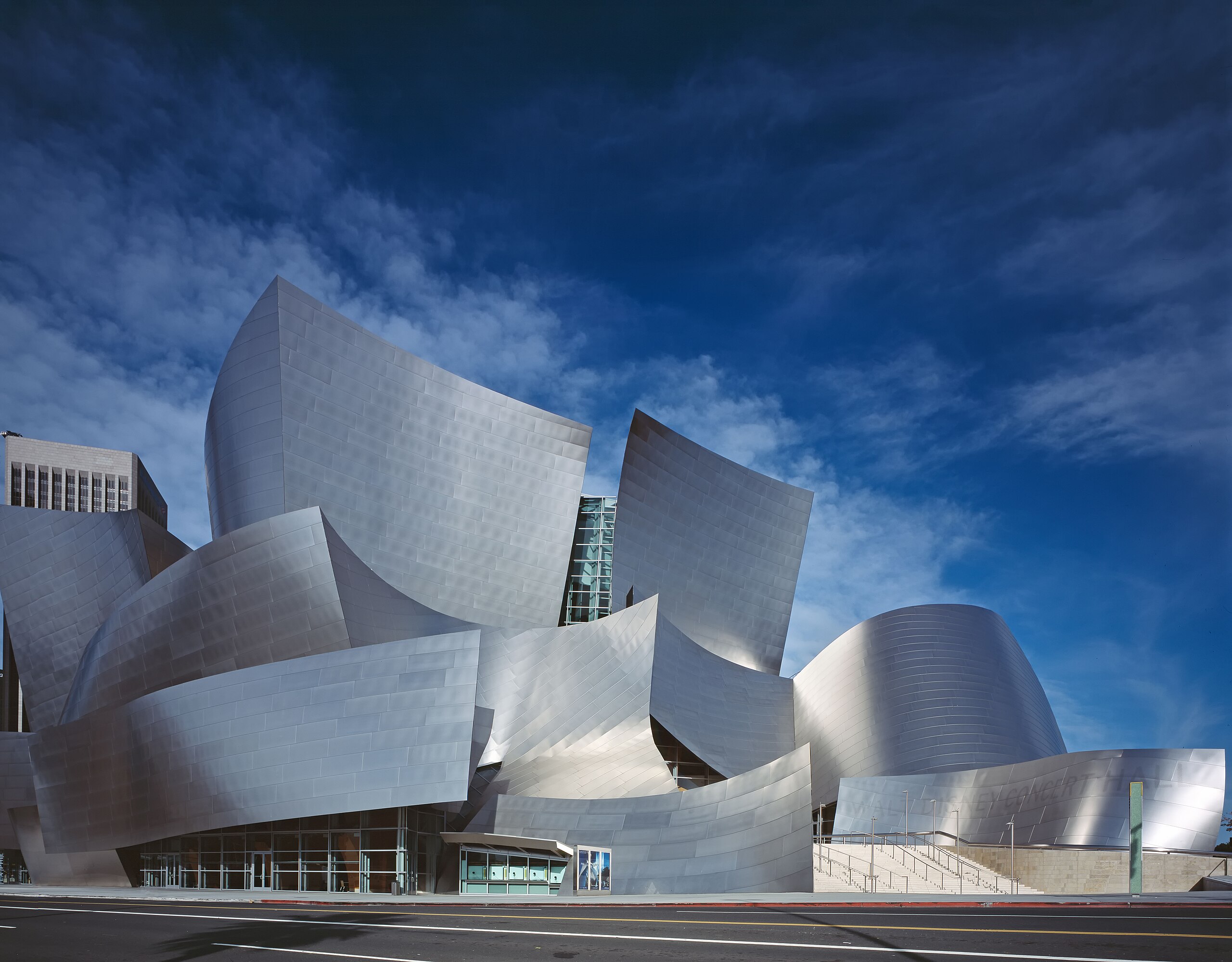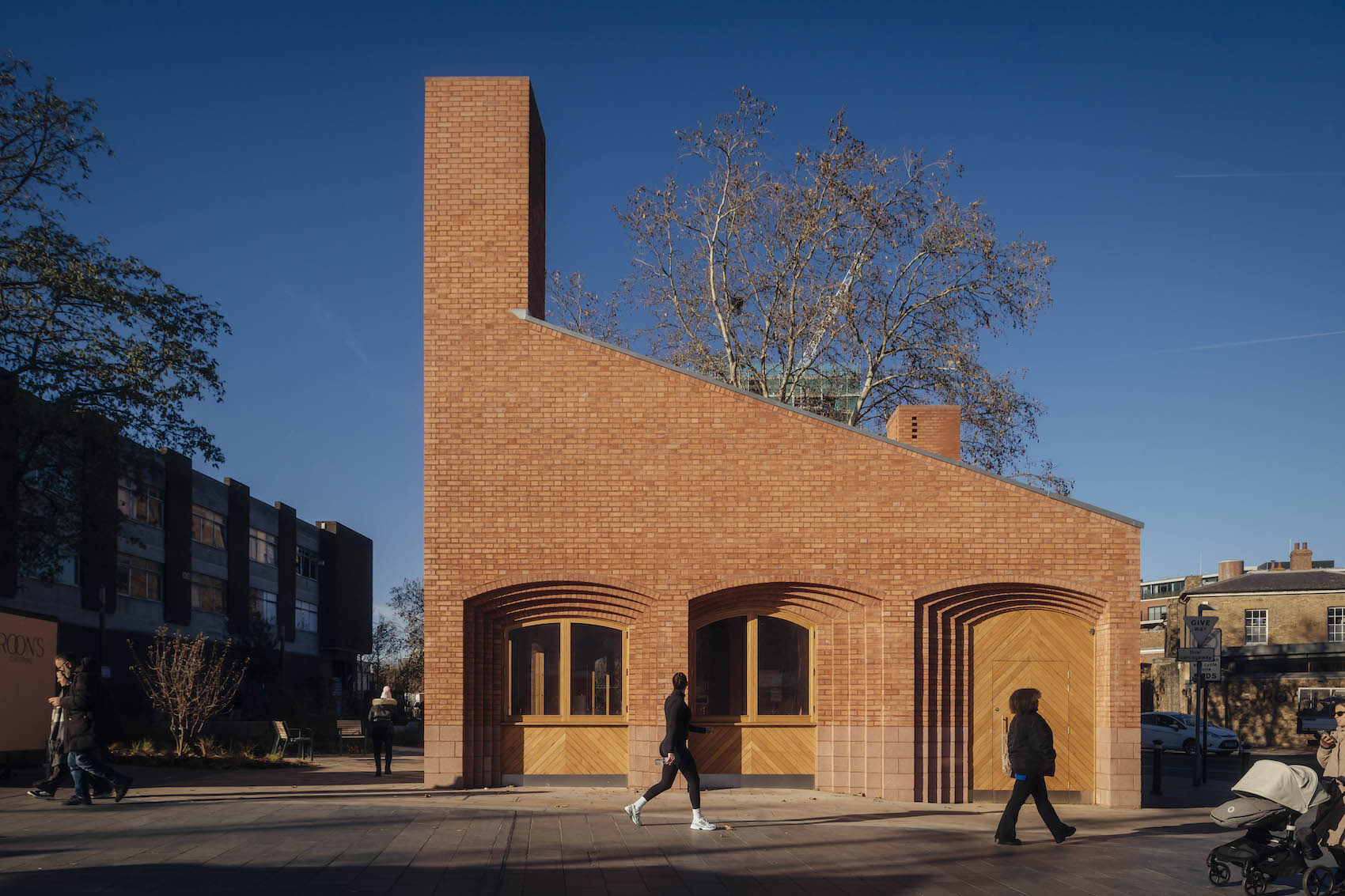Roz Barr Architects has replaced a 1960s house in Long Ditton, Surrey with two homes for three generations living under one roof. Nelly Greig enjoys an elegant reinterpretation of suburban family life.
Most of the houses in Long Ditton are hidden from view, shielded from the street by private gardens and long gravel drives. Glimpses of steeply pitched roofs and the occasional barking dog hint at the lives being lived behind the dense hedgerow. This sleepy neighbourhood in Surbiton, south west London has recently seen one of its beloved 1960s houses evolve into an eight bedroom, two kitchen home. Or rather two homes. Architect Roz Barr has designed two separate houses, 4A and 4B, that sit under one roof and share an entrance hall. The clients raised their two children in the house over 20 years ago and, with grandchildren on the way, wanted to build an additional house on the site for their daughter and her family. When the planning application for an entirely new, separate property was rejected due to concerns of overdevelopment, Barr designed what is considered in planning terms an extension to the original house, but is in essence, two new homes. Barr juggled two clients with one budget, one construction contract and one (ish) property.
Barr originally submitted consent for a scheme which kept the existing house and mirrored it, creating an identical wing extension, linked by a longer, lower pavilion. But the late 1960s structure was poorly built and inefficiently insulated, and it quickly became apparent that the most cost-effective strategy would be to demolish and rebuild. The original L-shaped footprint was kept, becoming house A, and mirrored to create house B. The shared entrance hall is in the pavilion, which is now double length, and the two wings project back framing a shared courtyard that opens out onto a re-landscaped garden. The view from the street is ordered but modest and forms a sharp edge; it is almost as if approaching the house from behind. Indeed, the building’s primary relationship is to its green surroundings, not to the road, and the plan speaks to this. Both living rooms are at the rear, looking out onto a shared courtyard and surrounding patio. The garden slopes down to meet it, giving the sense of a gentle, natural amphitheatre. Barr made use of the natural change in levels between the street and the garden by incorporating undercroft parking which is propped up by slim light concrete pillars. The ground floor of the house sits above, accessed by a concrete staircase leading up towards a flat brick façade with a narrow portico above the entrance.
The central staircase in each of the homes reflects the character of its occupants. The more playful House A (left) has folded metal steps with a polished walnut rail, while House B (right) is a formal cantilevered travertine with a dark metal handrail.
Barr was keen to find a brick that complimented the building’s leafy surroundings, but struggled to find the appropriate shade in the UK. She worked with Marshmoor Bricks, eventually sourcing the correct shade from a German manufacturer just before construction was set to begin. This meant re-doing all construction drawings to accommodate the slight variation between UK and German brick dimensions; another setback in what would be an eight-year project. But Barr’s patience and attention to detail paid off. The bricks give the exterior of the house an earthy, bark-like texture which, when paired with the creamy grout, allows the eye to easily glide between the woody garden, travertine paving and brick elevations. Their dark brown-grey colour with slight flecks of red, mimics the bark of the site’s slender pines, providing a complimentary backdrop whilst softening the contrast between the house and its vivid green garden. The bricks are also used to line the entrance hall, creating an intermediary space before entering either house.
The Courtyard Houses are speckled with delicate moments like this; where the intentional exchange between inside and out, domesticity and nature, is subtly executed but clearly felt. Two chimney flues run up the rear elevation of each wing, protruding from the external wall, mimicking – but not competing with – the back garden’s tall, slender trees. Two breakfast rooms with planted roofs, large picture windows and sliding doors, extend beyond the façade, slightly set back to create a private space for outdoor seating. “I’ve given them a home, but have also given them a landscape,” Barr explains. “The whole project was a landscape project and landscape to me does not just mean the garden; the whole plan balances the inside and the outside.” The result is a welcome change to the traditional suburban template of a large home isolated in a large garden.
To appease the planners, it was important to create a united façade, and the illusion of a single home. But as the project progressed, the preoccupation with striking the right balance between privacy and unity also became increasingly important to the client. Barr has navigated the challenge of intergenerational living with sensitivity. Thoughtful window placement protects the privacy of both wings, while the shared courtyard, with its long table, creates a space for the family to come together when they choose.
When approaching the screen-like façade, the garden’s treetops are barely seen, giving little indication of what lies behind. “You come into the entrance hall and suddenly the expanse of the garden, the view of the trees and the courtyard reveals itself.” says Barr. Between two identical front doors, house A to the left and B to the right, is a large picture window framing a view of the garden. Mismatched palm trees, silver birches and shrubs are scattered at the foot of the pines, all planted on a striped lawn. Standing in the hall feels like looking into a verdant zoo enclosure making you want to press your nose up against the glass.
When clearing the site, most of the soil was pushed back to add to the periphery’s natural incline creating the enclosed courtyard and lifting up the landscape so it can be seen from all west, south and east facing windows. There are no boundary walls to the property so low, planted walls are used instead, creating a subtle privacy to the site. Barr has created playful cobbled routes, enclosed seating areas and water features, leaning into the randomness of the garden which is instinctive and characterful, an effect heightened by the contrast with the formality of the symmetrical façade and the symmetrical lobby with two identical doors.
Barr’s concerns that the sizable property would sit jarringly amongst the green space led her to flatten out the elevations. The metal windows pushed up to the external face add to this whilst also creating deep interior sills. When lined with the dark walnut these soften the often long corridors creating pauses to sit with the garden view. Leafy shadows from the garden fall onto the earthy clay walls, giving Barr’s interior spaces a gently meditative feel.
The jumbled informality of the garden contrasts with the austerity of the rhythmic south-facing façade.
Both houses share a material palette of walnut and Iranian travertine, so when the two doors into the shared entrance hall are left open, as they often are, they create one corridor, and ultimately, one house. Yet the two homes are styled – and occupied – in very different ways. A love of cooking and hosting meant the retired couple wanted a largely open plan kitchen, dining and living areas on the ground floor which can be divided up using hidden partitions. The young family preferred clearly defined spaces for cooking, eating and children’s play, hence their kitchen is more enclosed, with a breakfast bar where the kids can sit whilst their parents cook. They also requested playful interiors for the children’s bedrooms and the family bathroom, which is covered in vivid turquoise tiles. The folded metal staircase which features walnut treads and a walnut handrail, curls up the centre of the left wing. Large rooflights create a beautifully lit stairwell with spacious landings. For Barr, there is no hierarchy of space, and the often neglected hallways are thoughtfully animated by movement and light. The more formal staircase in house B is next to the lobby in the body of the house, with cantilevered travertine and an elegant bent steel rail. This leads up to an office with an internal window looking out over the stairs, the master bedroom in the rear of the wing, and guest bedrooms and bathrooms. Again, skylights in the pitched roof flood the hallway and office with natural light and views ensuring there is always a connection with the garden and landscape.
Barr has carved out a new and highly poetic relationship between the house and its grounds. One can’t help but indulge in the metaphors of aging and family evoked by the synergy between these deeply rooted trees and the growing family that live amongst them. Two homes and three generations are united under a single roof, tied together by roots, with space to flourish and grow.
Additional images and drawings
Credits
Architect
Roz Barr Architects
Structural Engineers
PHI Design Ltd
Cost Consultants
Stockdale LLP
Planning Consultants
AZ Urban Studio
Arboricultural Consultants
Arbtech Consulting Ltd
Main Contractor
Cortec Ltd
Stone
The Stone Mason Company
Bricks
Marshmoor Brick Ltd – Hebrok Terra Nebula
Windows
Ideal Combi
Metalwork
Metalworks London
Specialist Woodwork
Andwoodcraft
Rooflights
Glazing Vision
Timber Flooring Supplier
Ted Todd



































